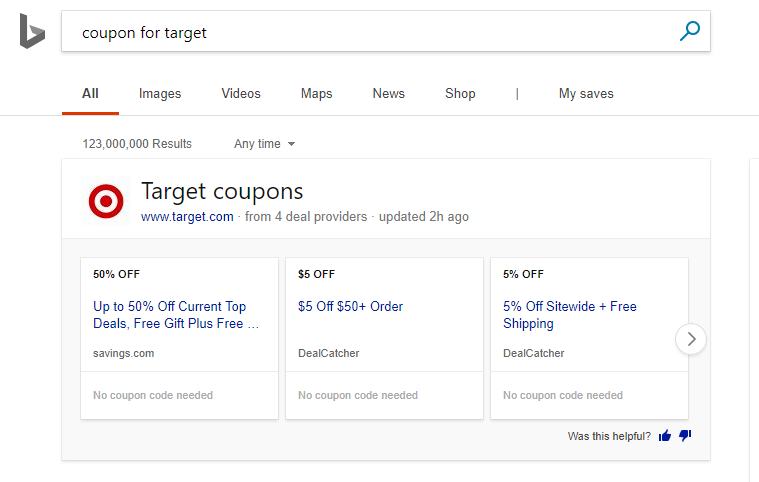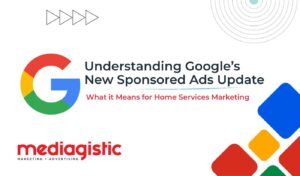
Last Week in Digital Marketing: Changes for Google, Twitter, Facebook, Bing, and Angie’s List
Last week we saw changes across a variety of platforms. Read on to keep up with the latest news and features in the digital marketing landscape!
Angie’s List Gets Sued for Alleged False Advertising
Angie’s List is under fire from San Francisco District Attorney George Gascon, who is suing the website for misleading users regarding its background checking-process. Angie’s List helps homeowners hire plumbers, electricians, and other home service professionals. According to Angie’s List, the website does background checks on the “principal/owner or relevant manager of all Certified Service Providers.” However, not all of the service techs coming into users’ homes have undergone background checks.
The ad that started it all was a YouTube video titled “Wanted,” which shows a waiter pointing out that one of a restaurant’s cooks looks a lot like the person on the Wanted poster in the kitchen. “Annual background checks: another reason to get Angie’s List for your home,” the ad stated.
Gascon says the language in the ad and on the website is misleading and is “likely to deceive” people who are using Angie’s List to hire local home service providers. “It is a matter of public safety that consumers are provided accurate information, especially when they are deciding whom to let into their homes,” Gascon said.
A spokesperson for Angie’s List defended the company, saying that only the information on the website is being disputed in the case, not the effectiveness of the company’s background check process. “We disagree with the claims made in this case and stand by both our screening process and our commitment to the best interests of our customers,” the spokesperson said.
Takeaway: Google’s Local Services Ads (LSAs) require a background check process as well, so any legal action regarding Angie’s List’s background checks could ultimately affect the process of applying for these ads. It’s highly likely that Google and Pinkerton will make the process even more intensive with more stringent requirements for dealers undergoing these checks.
Facebook Makes Changes to Its Video Ad Metrics
Businesses have been complaining that Facebook doesn’t use an accurate method to count video views and video watch times. Facebook has listened to these requests and is rolling out new practices for its 3-second and 10-second video view metrics: they will only count unrepeated watch times. In other words, if someone starts a video over form the beginning, this won’t add to their “seconds watched.”
Facebook is also releasing a new Video Plays metric that will be useful to accurately record how many people are seeing your video ad. If someone has a poor internet connection or low phone battery, a video ad won’t always play, and the person will instead see a thumbnail of the video. Video Plays metrics used to include this in the video ad impression count. Now, Facebook will only include an impression if a video is played, not just a thumbnail being viewed or a video left unplayed. Soon, businesses will be able to verify the Video Plays Metric with Moat, which uses its own process to count the number of video ad plays.
Facebook giveth and Facebook taketh away, so it will be removing two metrics available to businesses: 30-Second Video View and Video Percentage Watched. Facebook justified the removal, saying that these two metrics aren’t used very often and are too similar to the other available metrics.
Takeaway: You may notice the amount of video views you are getting on ads decreasing. However, these new measurements are a more accurate representation of who is actually viewing your content.
Google Confirms Broad Core Algorithm Update and Some Websites Suffer
Wednesday morning (Aug. 1), webmasters and SEO specialists noticed a shift in their websites’ traffic and rankings. Google did confirm that it released a “broad core algorithm update” in order to make search results more accurate for users.
“As with any update, some sites may note drops or gains,” Google tweeted on Wednesday. “There’s nothing wrong with pages that may now perform less well. Instead, it’s that changes to our systems are benefiting pages that were previously under-rewarded.”
Takeaway: A Google core algorithm update is the result of Google changing how it values and weighs many different factors, so there isn’t “one thing” that experts can point to in order to “fix” this change. Early observations indicate that the update has mostly had ramifications for YMYL (Your Money or Your Life) sites. A number of sites in the diet, nutrition and medical device niches also appear to have been affected. Rankings also seem to have been adjusted away from large, multi-location businesses in favor of smaller, locally based businesses In the meantime, Google has advised that business owners, marketers and webmasters review the Quality Raters Guidelines to see what can be improved on their sites.
Google Introduces “Datasets”
In order to help web pages that primarily relay information in data-form, Google has improved the way users can view datasets in the Google results page. When users search for something, they can now see the data that each website contains more clearly, in table format. Google has labeled this implementation “datasets” and emphasized its applicability to all sorts of websites with information represented in data form, from websites for local schools to news organizations to national politics.
Takeaway: The major beneficiaries of this change will be websites that contain datasets from social sciences, life sciences, biological sciences, and government studies.
Google Adds FAQ, Q&A, and How-to Schema
And just to keep digital marketers and SEO specialists on their toes, Google also announced that it would be adding FAQ, Q&A, and How-to features to its search results pages. Similar to how featured snippets or ads are displayed, these three schema appear at the top of the results page, and on a cell phone, they take up most of the screen.
Takeaway: These changes have yet to be implemented into Google search results, but many are wondering if they will be used in desktop format as well as mobile, and if Google will gather information to answer questions on its own or rely on information from the website owner.
Bing Adds Convenient Search Features for Travelers and Homeowners
Bing didn’t want to let Google to hog the limelight, so it introduced several new features to its search: hotel price comparisons, home services pricing info, and coupon snippets.
People browsing around the web for a hotel for their next trip can now see photos and the class rating of the hotel, as well as compare booking prices from different sites such as TripAdvisor and Expedia. There’s also an option to expand your search, which involves Bing creating a grid that shows various hotels with their amenities, location, guest rating, and availability options.
Bing is also making it easier for homeowners to figure out how much it will cost to perform certain home repairs or services. It uses data from Porch to display the minimum, maximum, and average costs of a home service like gutter cleaning. It then lets users find nearby contractors and businesses for the job and ask for a quote using Yelp.
For all the coupon cutters out there, Bing has a surprise for you: it now collects deals and specials from first- and third-party listings and presents it to users when they search for businesses or coupons. They include helpful information like “in-store only” or “about to expire.”

Takeaway: Google still owns search. But home service companies with high impression share in Google and with larger budgets should evaluate using these new features to promote the services they have to offer, as well as promoting any current offers they have available.
Twitter Defends Itself from Shadow Banning Accusation
Last week, Twitter received accusations that it “shadow bans” accounts, a process that involves making a user’s content invisible to everyone except themselves, without the user knowing. Twitter shot back at these accusations, releasing a blog post saying that it does not shadow ban, but instead rank tweets and search results based on certain criteria:
- Tweets from people you’re interested in are ranked highly.
- Popular tweets are ranked more highly because there’s a higher chance you’ll like them or find them relevant.
- Tweets from malicious users, or “bad-faith actors,” are ranked lower.
The reason people became suspicious of Twitter shadow banning users was because there was a problem with its auto-suggestion: certain accounts weren’t auto-suggested when someone started typing in the search bar (even if the exact account name was typed in). However, the account name, tweets, and conversations involving the account would appear once the search button was hit. Twitter resolved this error within a few hours, but there were still hundreds of thousands of accounts impacted, according to the company’s blog post.
Some people argued that accounts for Republican representatives were being targeted, but Twitter Product Lead Kayvon Beykpour assured that both Republican and Democratic accounts were affected in the auto-suggestion search issue. “As mentioned above, the issue was broad-ranging and not limited to political accounts or specific geographies,” Beykpour wrote in the article. “And most accounts affected had nothing to do with politics at all.”
During a Twitter conversation, Beykpour promised that the company was indeed spending a lot of time working to improve its search feature and decrease abusive and spam accounts.
Takeaway: Tweet content that your followers will be interested in so that they are more likely to engage with your brand on Twitter. The more interest you create, the better ranked your content will be, which leads to more impressions.
 Liz MacLean is an Inbound Marketing Specialist with experience managing social media and creating content for small businesses and nonprofit organizations. She is an award-winning writer who has produced photographs and articles about cooking, clothing, nature, and fitness for local magazines and newspapers.
Liz MacLean is an Inbound Marketing Specialist with experience managing social media and creating content for small businesses and nonprofit organizations. She is an award-winning writer who has produced photographs and articles about cooking, clothing, nature, and fitness for local magazines and newspapers.
Image via iStock.
You May Also Like

Understanding Google’s Sponsored Results Update: What it Means for Home Services Marketing
October 20, 2025Google is once again reshaping how paid ads appear in search results, and this change (called the Google Sponsored Results Update) could… Continue Reading Understanding Google’s Sponsored Results Update: What it Means for Home Services Marketing…

Are OTT Ads Served on TV Superior to CTV Ads on Mobile Devices?
September 23, 2025As streaming continues to dominate the media landscape, advertisers face a critical question: where should their OTT ad dollars go, connected TV… Continue Reading Are OTT Ads Served on TV Superior to CTV Ads on Mobile Devices?…

6 Ways to Boost GLSA Performance: The Latest Insights from Google for Contractors
September 3, 2025Google Local Services Ads (GLSA) can be one of the fastest and most effective ways for home services contractors to get qualified… Continue Reading 6 Ways to Boost GLSA Performance: The Latest Insights from Google for Contractors…